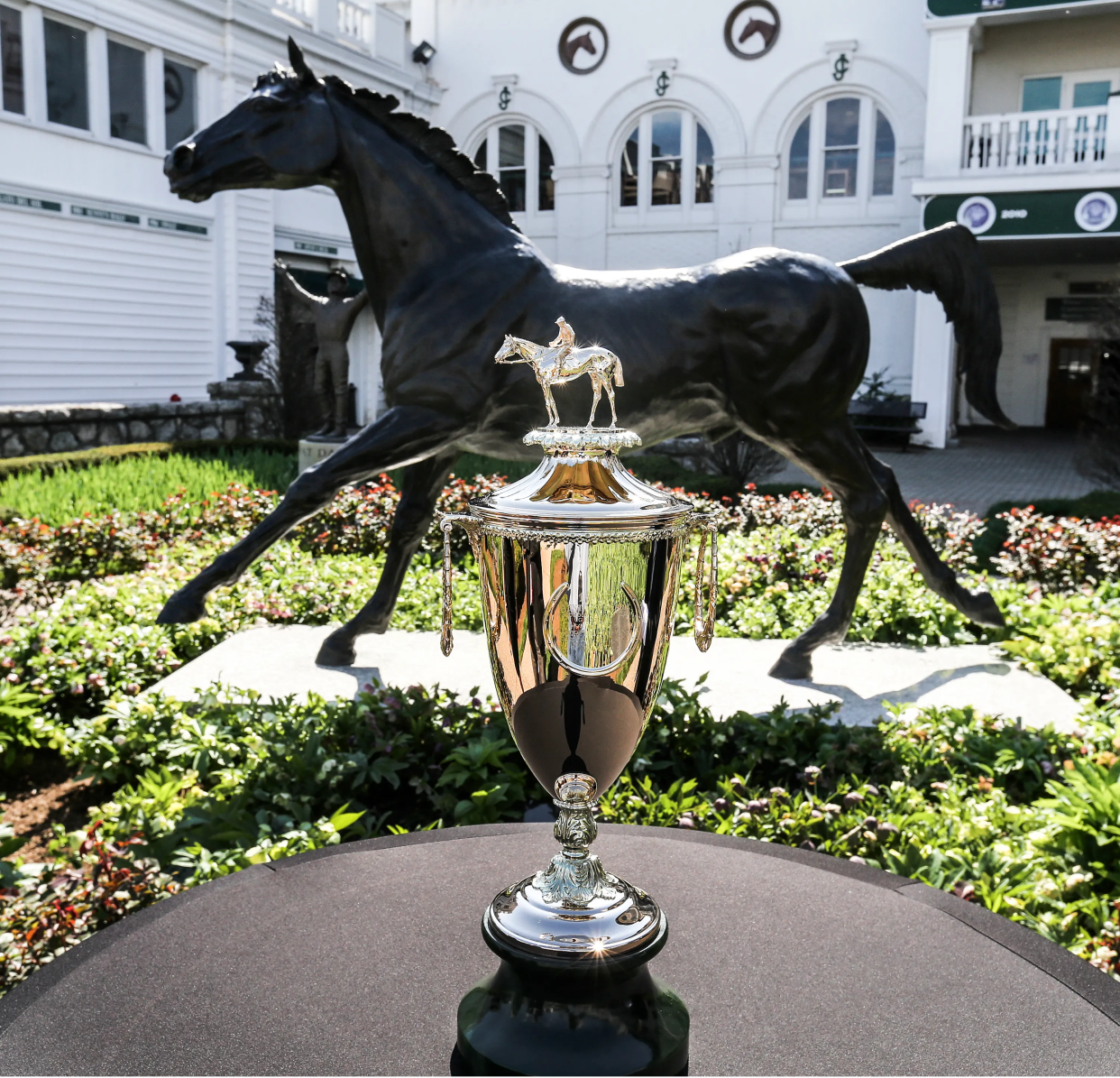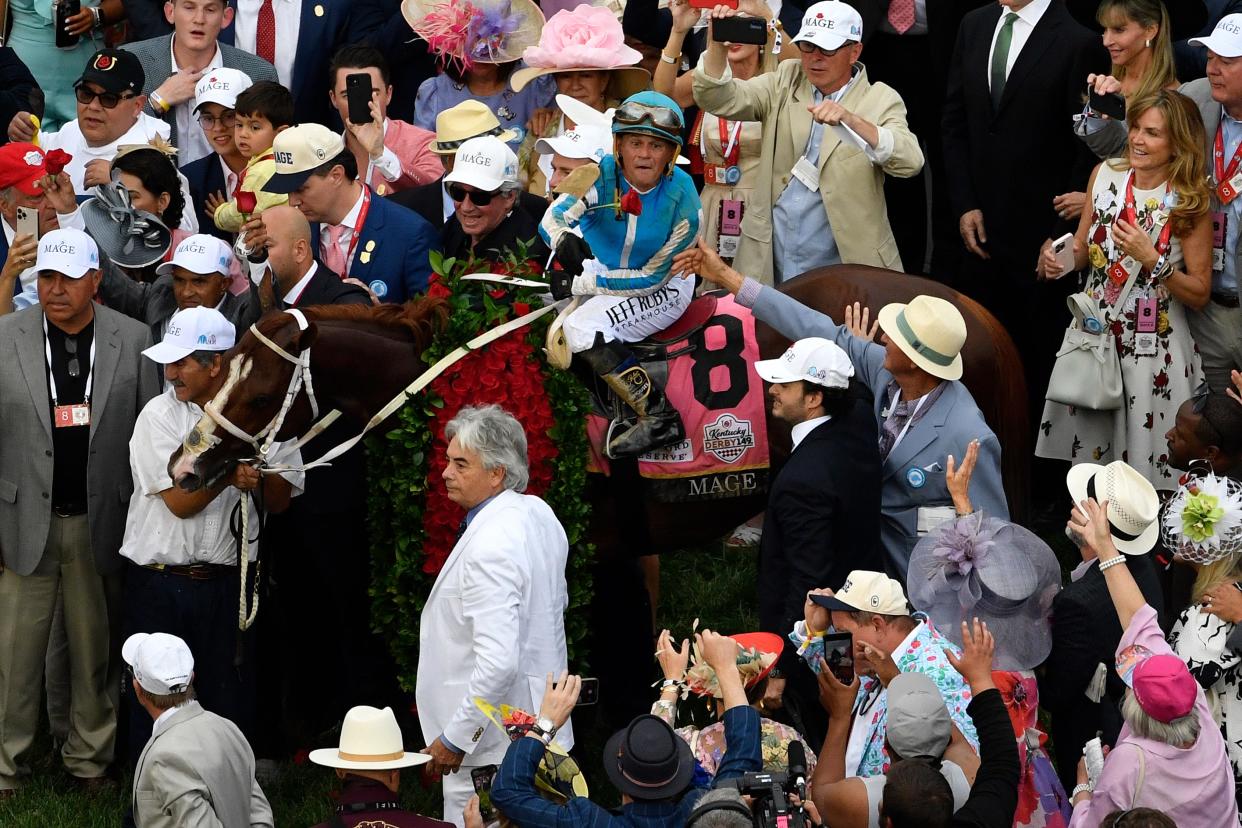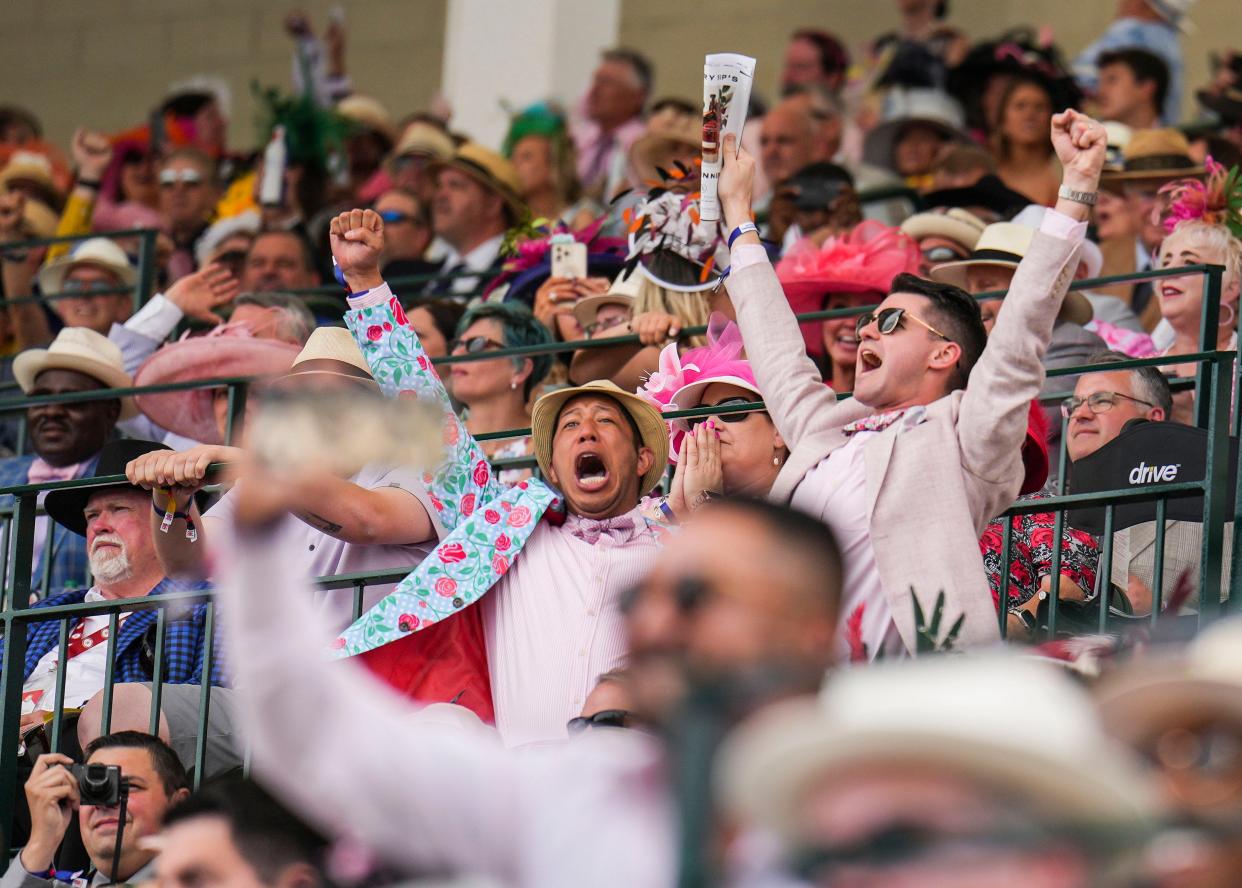Kentucky Derby's purse, betting is at all-time high. Tracking their growth over the years
Churchill Downs has upped the ante for Kentucky Derby 150.
This year's Run for the Roses will feature a record purse of $5 million.
Announcing this news in January, Churchill Downs Inc. CEO Bill Carstanjen called it "a symbol of the health of horse racing in Kentucky."
Look no further than the money wagered during back-to-back historic Derby weekends for proof.
Derby Day generated a record all-sources handle of $288,700,000 last year; which was $14.9 million more than the former high-water mark of $273,800,000 — set on the previous first Saturday in May.
When combined with Oaks Day 2023, bettors wagered a whopping $363,600,000 across just two days of racing.
On its own, the 149th Run for the Roses drew a record $188.7 million in wagers.
Can the boundaries be pushed for a third straight year? It seems likely; considering it's a milestone anniversary for the Derby and the omnipresence of sports gambling in today's world.
One thing's for sure. We've come a long way from the first-place finisher walking away with less than $3,000 back in 1875.
Here's a look at the race's growth in prize money, and from a betting standpoint, over the years:
How much was first Kentucky Derby purse?

The first Kentucky Derby, in 1875, had a $1,000 purse — plus added money.
Added money, according to Daily Racing Form, is any amount of money added to the purse of a race by a racing association (or a breeding fund, etc.) to the amount paid by owners in nomination, eligibility, entry and starting fees.
The winner of the first Run for the Roses, Aristides, received $2,850. The runner-up, Volcano, received $200.
That makes for a grand total of $3,050; $2,050 of which was added money.
Kentucky Derby purse growth, distribution changes over years

Here's a look at how the Kentucky Derby purse has changed over the years:
1875: $1,000-added
1876-87: $1,500-added
1888-92, 1894-95: $2,500-added
1893: $3,000-added
1896-1912: $6,000-added
1913: $5,000-added
1914-16: $10,000-added
1917-18: $15,000-added
1919: $20,000-added
1920, 1934: $30,000-added
1935-36: $40,000-added
1921-33, 1937-39: $50,000-added
1940-45: $75,000-added
1946-54: $100,000-added
1955-78: $125,000-added
1979-81: $200,000-added
1982-85: $250,000-added
1986-90: $350,000-added
1991-95: $500,000-added
1996-2004: $1 million guaranteed
2005-18: $2 million guaranteed
2019-23: $3 million guaranteed
Between 1875-85, only the first- and second-place finishers received payouts. That changed in 1886; when Free Knight was awarded $150 for placing third.
Now the top five collect checks. Here's how the purse was distributed from 2019-23:
First place: $1.86 million
Second place: $600,000
Third place: $300,000
Fourth place: $150,000
Fifth place: $90,000
How much money is wagered on Kentucky Derby each year?

Wagering at the first Derby, according to the race's official website, was done via auction pools.
How'd that work? Bettors would bid on their desired horse; and, once the entire field was auctioned off, all the winning bids were pooled together. The bettor who backed the winning horse won the whole pot.
Pari-mutuel betting was first introduced three years later but didn't catch on until 1908; when bookmaking was outlawed in Louisville. In 1911, the minimum bet amount was lowered from $5 to $2.
Money really started flowing in with the advent of simulcast wagering during the early 1980s. It hasn't slowed down since — and shouldn't, considering the widespread legalization of sports gambling and the accessibility of mobile sportsbook apps.
Here's a look at the all-sources handle for Derby Day over the past four decades:
1984: $25,009,276
1985: $26,805,205
1986: $33,046,562
1987: $34,405,461
1988: $41,015,694
1989: $36,945,894
1990: $42,227,280
1991: $42,724,449
1992: $43,448,786
1993: $52,362,661
1994: $58,826,098
1995: $67,840,867
1996: $75,405,564
1997: $82,677,468
1998: $88,941,832
1999: $90,843,598
2000: $101,455,291
2001: $107,598,904
2002: $123,243,228
2003: $140,373,426
2004: $142,848,289
2005: $155,793,495
2006: $175,129,090
2007: $168,018,982
2008: $164,668,176
2009: $155,969,770
2010: $162,749,136
2011: $165,230,636
2012: $186,960,855
2013: $184,600,256
2014: $186,639,424
2015: $194,271,295
2016: $192,587,197
2017: $209,179,920
2018: $225,671,089
2019: $250,900,257
2020: $126,033,002
2021: $233,030,397
2022: $273,800,000
2023: $288,700,000
Reach Louisville men's basketball reporter Brooks Holton at bholton@gannett.com and follow him on X at @brooksHolton.
This article originally appeared on Louisville Courier Journal: Kentucky Derby's purse, betting continue to grow through race history
